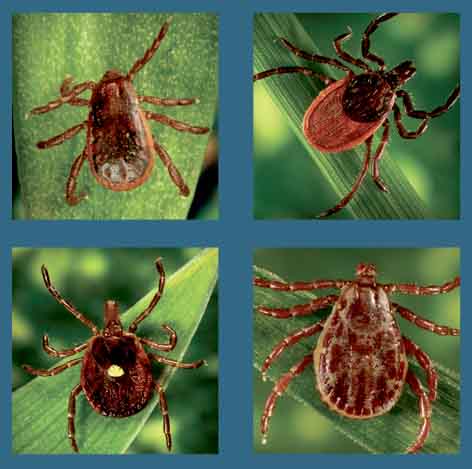MAGOFFIN COUNTY – If you’ve seen more ticks so far this year, you’re not alone, so Mortimer Media sat down with the Magoffin County Public Health Director to see if the anecdotes meet the statistics.
This area has primarily three types of ticks: the Dog Tick (can cause Rocky Mountain Spotted Fever), the Deer Tick or Blacklegged Tick (can cause Lyme disease), and the Lone Star Tick (extremely small, microscopic in early stages of the life cycle and still small at full maturity – can cause ehrlichiosis and Alpha-gal Syndrome).
According to the Kentucky Department of Public Health, the number of cases of tickborne illnesses are increasing. The state’s public health department recently wrapped up a multi-year surveillance program that went out and collected, examined and tested the ticks for diseases.
For instance, in the 160 Deer Ticks collected, 40 of them – 25 % – tested positive for Lyme disease. Tickborne illnesses have gone up 125% from 2020 to 2023. Lyme disease jumped by 275-280% during the timeframe researchers looked at the tick population in Kentucky.
“The Deer Tick is the one that causes the Lyme disease and Lyme disease from 2000 to 2020, there were 391 confirmed cases in Kentucky and in 2024 there were 30 confirmed cases, so if you project that, Lyme disease is kind of doubling their numbers each year in the past few years,” Magoffin County Public Health Director James “Pete” Shepherd said. “It’s because they say there’s more Deer Ticks than ever before.”
Ehrlichiosis is often caused by the Lone Star Tick, the smallest of all especially when you take into account that they can spread diseases while in their larval state, which is nearly microscopic. Researchers found a similar increase in ehrlichiosis, with roughly 30 cases a year reported (in a study a few years old).
“Even though the Turkey Mite or Lone Star seems to be getting all the publicity, it seems like in their larva stage there’s so many of them and in the wild they’re kind of in a wad and if you touch one of the larva pods, you get all of these little fellers all over you. That’s why they’re so prevalent,” Shepherd said. “I guess the big one on the Lone Star Tick is the one you can get a meat allergy after being bit and infected with the ehrlichiosis. That’s a big scare tactic for everyone because we like our steak, but it can cause a meat allergy from some bites and in some cases.”
Shepherd explained catching it early is the best way to prevent the spread of diseases.
“The best time is immediately when you find it to get rid of it,” Shepherd said. “The say a tick has to be on you 36 years hours – that’s imbedded in your skin – to become a threat to your health, with the Lyme disease and Rocky Mountain Spotted Fever. If you find it early, take it off.”
He also explained there is a right and wrong way to remove a tick.
“They don’t want you to squeeze it with your fingers because if you’ve got a tick that’s engorged a little bit and you squeeze it, it will shoot all of that stuff that’s inside it back into you, which makes it very high risk of becoming infected,” Shepherd said.
If you have an imbedded tick, make sure to remove the entire tick. If the head remains in the skin, go ahead and clean the wound with alcohol and then remove the head. If you start feeling nauseated, a headache or any kind of flu-like symptoms or you notice redness around the wound area, immediately go to the doctor.
“Tick bites are treatable and they’re treatable very easily if you get to them early with antibiotics,” Shepherd said. “The main thing is watch where you pulled the tick off and if you see any kind of change, go ahead and see your physician. If left untreated, it can turn into a life-threatening situation.”

















